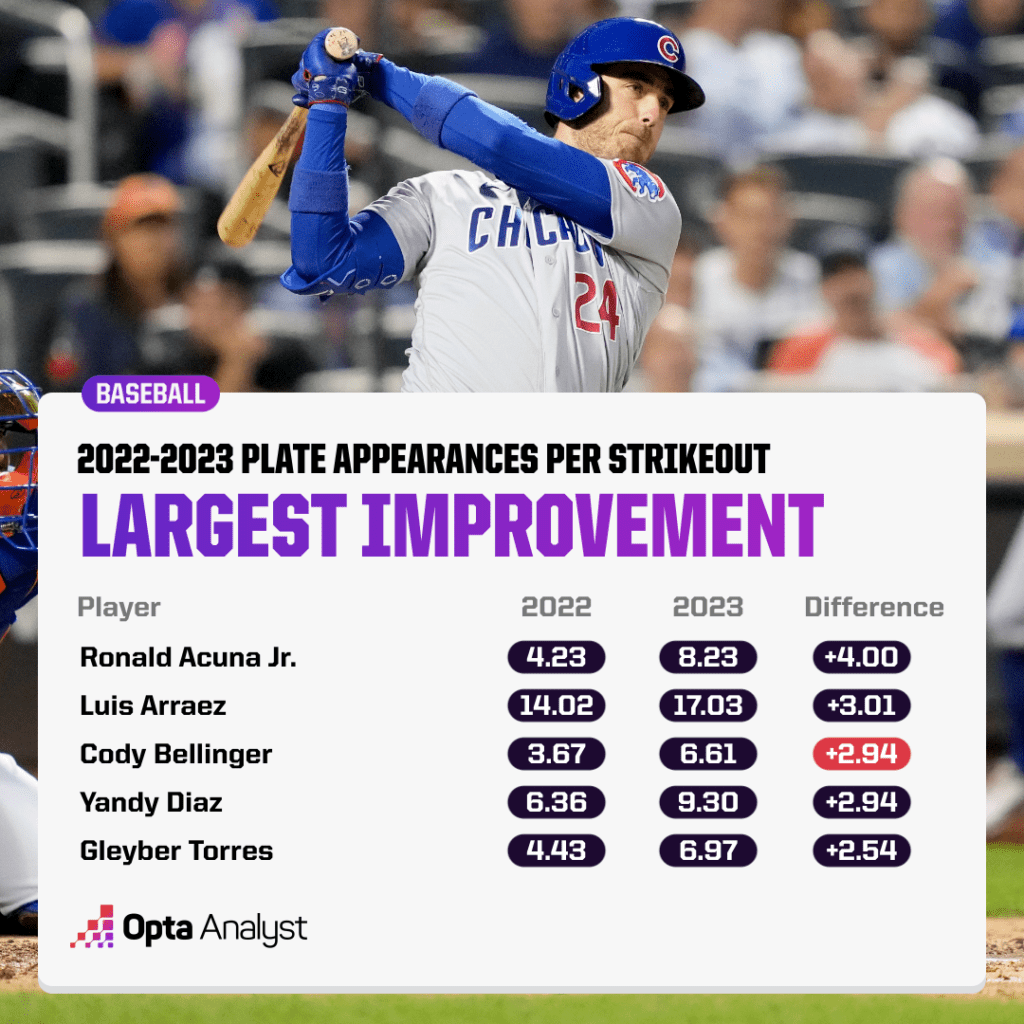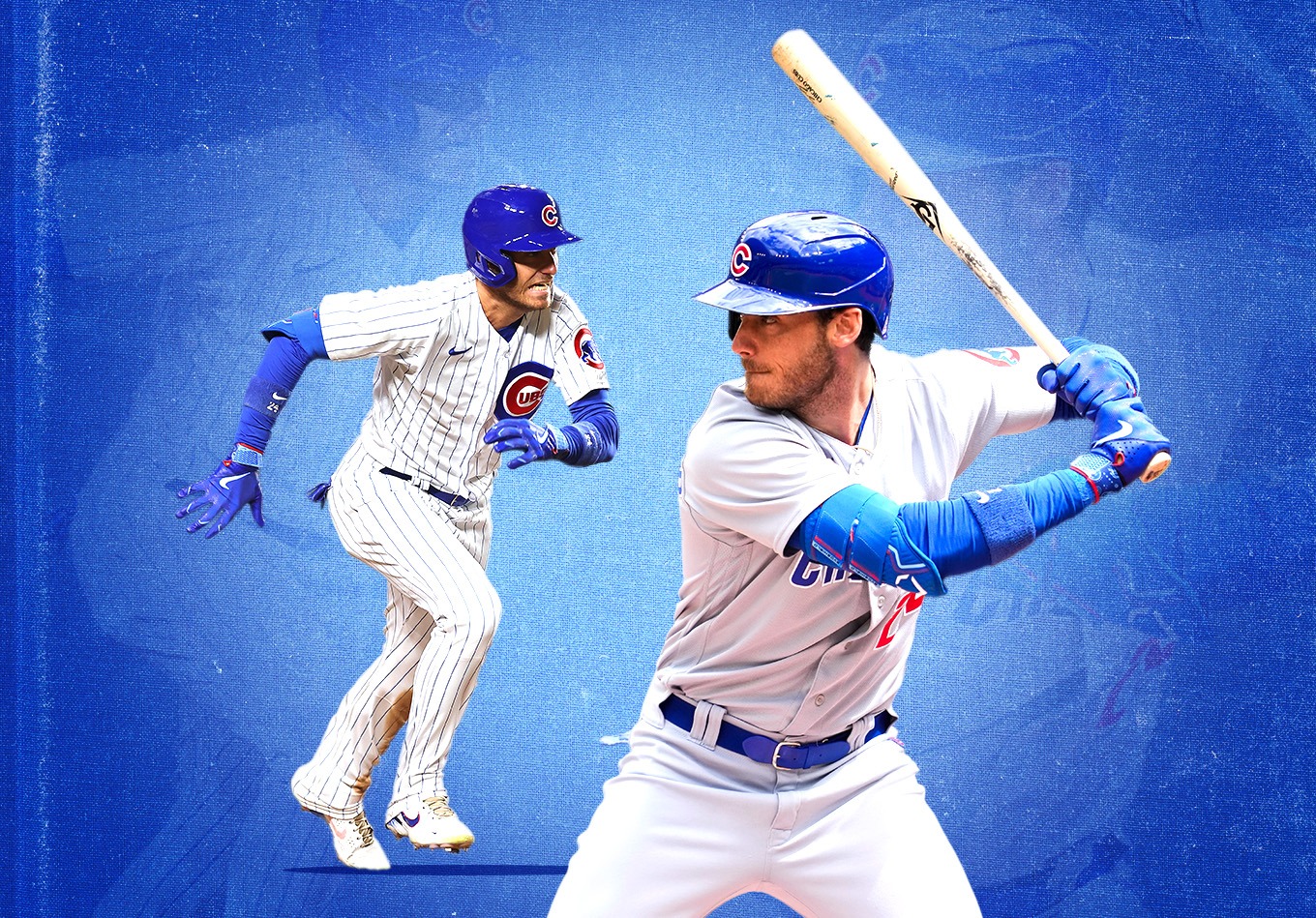The Chicago Cubs have emerged as a playoff contender, and it’s in large part because offseason acquisition Cody Bellinger has bounced back with great numbers at the plate.
He’s fifth in the majors with a .316 batting average and seventh with a .535 slugging percentage to go along with 20 home runs (or Bellibombs) and 77 RBIs.
You would think that, if it wasn’t for Ronald Acuna Jr., Mookie Betts or first basemen Freddie Freeman and Matt Olson, Bellinger would be a legitimate National League MVP contender.
However, a closer look gives us a more accurate assessment of Bellinger’s 2023 performance. And the underlying data tells us that he has been very, very lucky more than he has returned to his 2017-19 form. The two-time All-Star won the NLCS MVP in 2018 while helping the Los Angeles Dodgers reach their second straight World Series before earning NL MVP honors the following season.
It’s not that Bellinger has been bad. That hasn’t been the case for the former Gold Glove winner defensively in center field or at first base or as a baserunner with 18 steals in 22 attempts. But when it comes to quality of contact and expected performance at the plate versus actual numbers, he has been much closer to average than an “MVP contender.”
Before the season, after being non-tendered by the Dodgers, Bellinger signed a one-year deal worth $17.5 million with the Cubs that also contained a mutual option for 2024 and a $5.5 million buyout.
Given his agent (Scott Boras) and the market dynamics (he’ll be the biggest slugger on the free-agent market aside from Shohei Ohtani of the Los Angeles Angels), teams like the New York Yankees and Boston Red Sox will likely offer Bellinger a multi-year, big-money contract based on his 2023 stats (he is likely to decline his part of the mutual option and test the market again).
USA Today’s Bob Nightengale recently predicted the lefty slugger will land somewhere between $100-150 million.
Bellinger’s statistical improvement in 2023 basically stems from three factors: luck, more frequent contact and the restrictions of defensive shifts (all three are in some way related). We will examine each one but let’s start with the latter.
Teams had been popularizing the shift to increase the odds of having a fielder in range to make plays in some key zones of the infield and outfield. In 2022, Bellinger had a .183 batting average on grounders to the right side of the infield, which was far from ideal since it was the zone where he hit the ball more frequently (29%). The former Rookie of the Year also had a .211 average in grounders up the middle.
Now, Major League Baseball only allows two defenders on each side of second base. The situation has helped Bellinger tremendously, as his batting average in grounders to the right side of the infield was .222 and .370 on ground balls up the middle heading into Wednesday’s big 3-2 win over the first-place Milwaukee Brewers. Bellinger drove in the go-ahead run with a single off the pitcher’s leg.
Yes, all those balls that are now going for hits count for his batting average and overall rate stats (and totals). If you were wondering, 2021 also yielded some ugly results that had something to do with the shift. That year, he hit .109 on grounders to the right side and .091 in those up the middle. Yikes.
For the sake of argument, let’s remember that Bellinger had a .654 OPS last year and a .542 mark in 2021. In 2023? A cool .897 – eighth in all of baseball.
However, there is another factor driving his improvement this year: more contact. You can say all you want about how lucky Bellinger has been on balls in play this year – we will get there in a minute – but there is no denying he is making more contact.
He has significantly cut down his strikeouts from 3.67 plate appearances per strikeout (PA/K) last year to 6.61 this season (entering Wednesday). It has been the third-best improvement from 2022 to 2023 behind contact masters Acuna and Luis Arraez.

That 6.61 PA/K this campaign is actually the best mark of his career, surpassing even the years in which he performed at an MVP level. Other signs he has improved his contact are his career-best 20.0 swing and miss percentage and his 107 contact+ entering Wednesday is far better than last year’s 98.
Bellinger also improved his batting average with two strikes. It’s actually the second-best mark in baseball at .290, and considering he hit .141 in those situations last season, it’s the largest increase from 2022 to 2023 in MLB.
Now that we have taken a good look at several important factors such as the shift ban and Bellinger’s improvement in making contact, we should say that the 2023 version of Bellinger has been very lucky when it comes to balls in play.
This is directly correlated with the shift ban, but there has been more than a bit of good fortune, too. Bellinger’s BABIP (batting average on balls in play) this year is a whopping .330. It was .255 last year and .196 (!) in 2021. It’s much higher than his career mark of .285 and represents the highest mark of his MLB tenure.
It should come down some eventually, either in what is left of this season or next year.
Additionally, his raw value and BIP+ numbers also back how he’s been overachieving.
Raw value, or RV, is a total stat that examines how a hitter performs while considering the three phases of hitting: ball-strike recognition and plate discipline, contact ability, and quality of contact. It differs from more traditional metrics because it evaluates each pitch and not just the outcome of the at-bat.
Total raw value is a cumulative stat, but we also have RV+ to help us evaluate hitting performance relative to the league average of 100. For batters, anything over 100 is desirable and anything lower than that is considered below-average.
The league leader, Betts, has a 53.4 total raw value. With a meager 1.2 raw value, Bellinger ranks 169th in MLB. Not top 10, not top 50, and not even top 100. His RV+ is also a middling 102. In other words, the data reveals that Bellinger has been a hair above the league average at the plate and nothing more.
We have already discussed his slightly above-average 107 contact+. His BIP+, however, has left a lot to be desired at 80. BIP+ uses similar factors as contact+ to examine a hitter’s ability to inflict damage on contact. Bellinger’s mark is much worse than the league-average value, and frankly very disappointing for a guy with a .897 OPS.
The other element of hitting that is covered by RV, discipline+, examines a batter’s ability to discern balls from strikes. At 88, Bellinger also rates below the league average.
Overall, the quantity of contact has improved considerably in 2023, but Bellinger’s plate discipline has eroded (over 14 plate appearances per walk in the last two seasons) and his ability to hit the ball hard consistently has been subpar.
The fact that Bellinger has such a robust stat line is a small miracle on the north side if we look at all the data, and smart teams shouldn’t consider breaking the bank for him if/when he reaches free agency later this year.
Like this? Follow us on Twitter for more.
